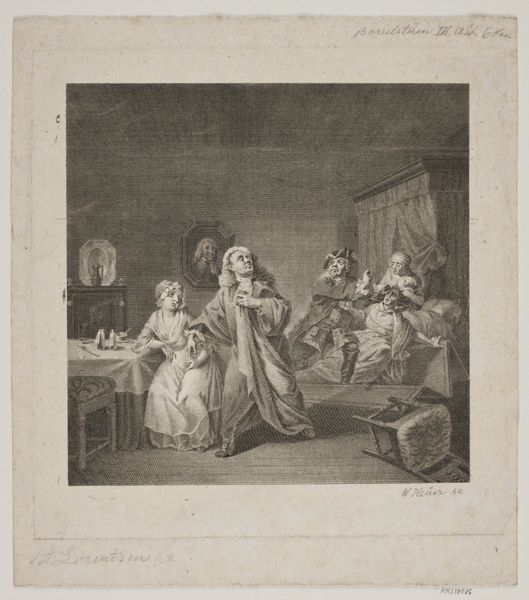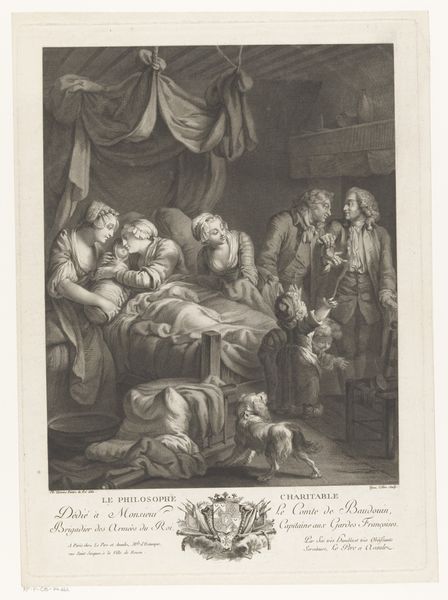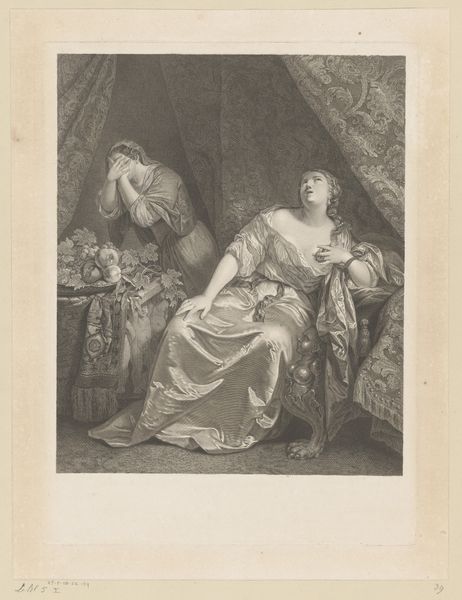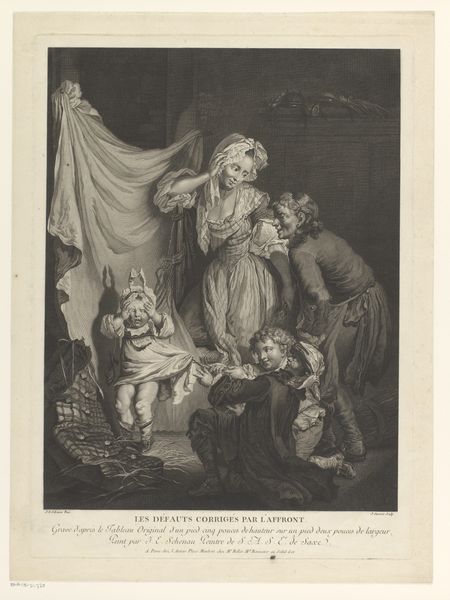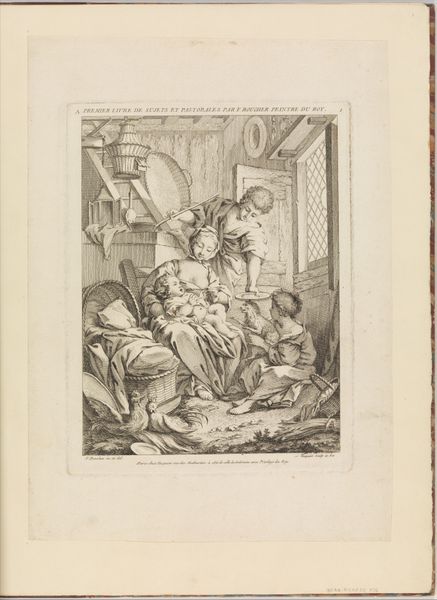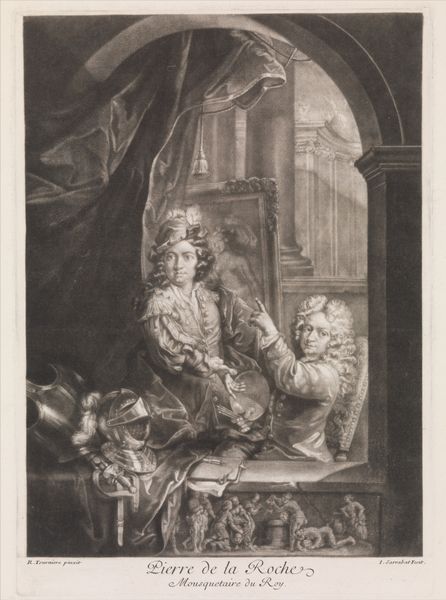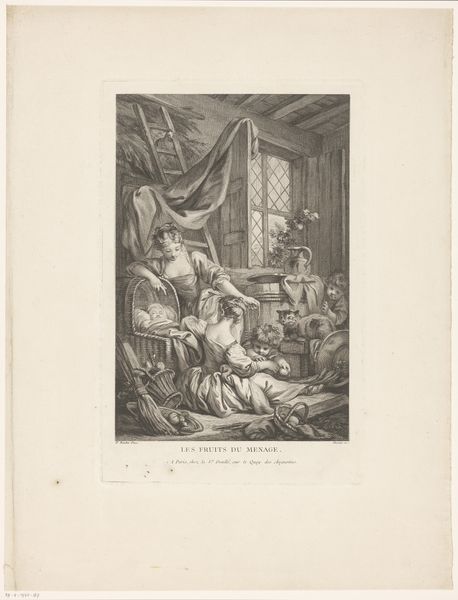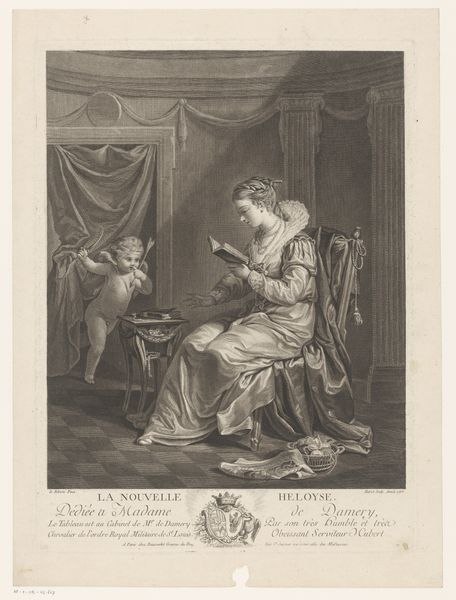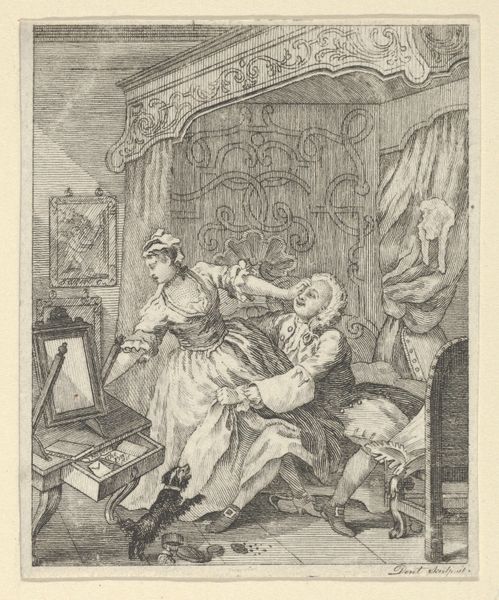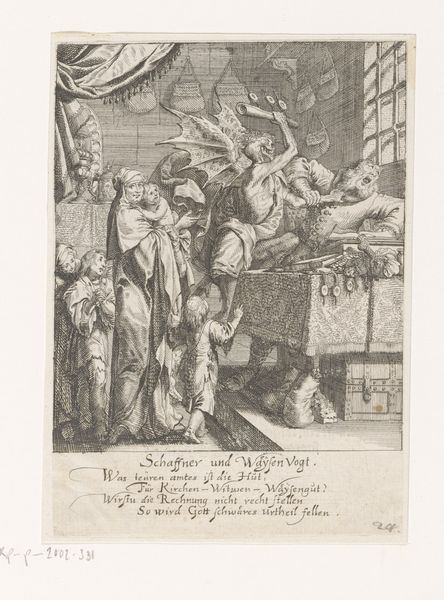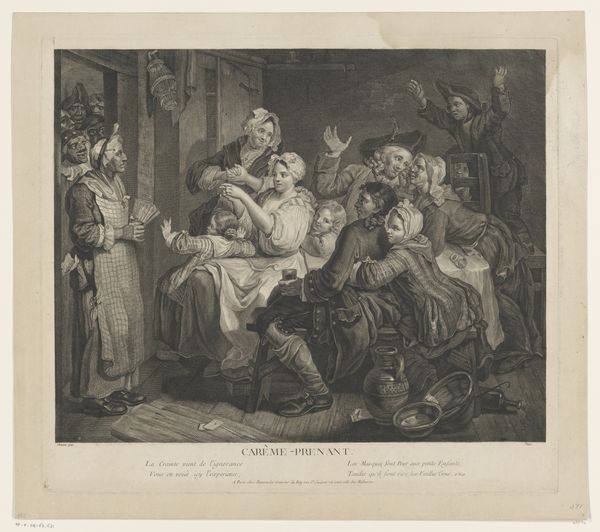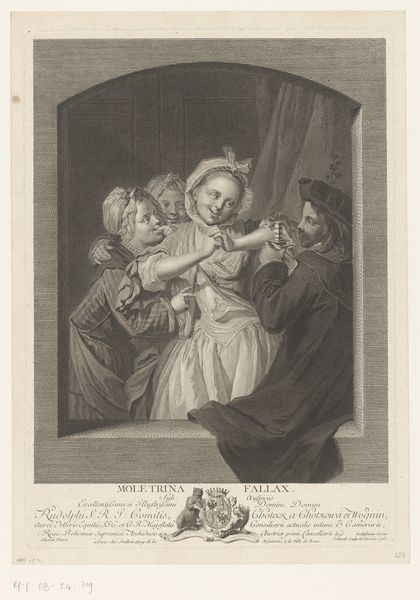
Dimensions: height 476 mm, width 378 mm
Copyright: Rijks Museum: Open Domain
Curator: This engraving, "Young Women at a Fortune Teller's," was completed around 1770 by Louis Michel Halbou, in a Baroque style reminiscent of genre painting, illustrating narrative art. Editor: Intriguing. It evokes a shadowy aura—almost a premonition captured through monochromatic textures. Notice the play of light, emphasizing a tense narrative tableau. Curator: Indeed. Observe how Halbou orchestrates our focus. The central figure—a young noblewoman—is swathed in intricately rendered fabric. This textile opulence suggests credulity, as underscored by the artwork's subtitle, La Credulite. Editor: That opulence also feels rather vulnerable against the roughhewn environment. Her posture is also crucial; she hesitates, finger to her lips—a classic symbol of uncertain decision making. It could signify fear and gullibility in relation to the fortune teller’s dark gaze. Curator: The gaze is significant. The compositional balance achieves a formal harmony. But there is asymmetry at the top that contrasts sharply with the detailed costumes; this could speak to imbalanced societal structure. Editor: Precisely. Consider the fortune teller—she emerges as a kind of archetypal figure, reminiscent of the witch archetype or even the wise crone, rooted in older pagan symbolism. Even in her age, she holds social power because she holds narrative and destiny. Curator: Further, the old engraving style enhances that association. Its historical and symbolic depth becomes more resonant when paired with Baroque aesthetics. It’s fascinating how these styles converse and enrich interpretation. Editor: Right! By blending formal arrangement and archetypal images, the engraving provokes profound inquiry on trust, class, and individual belief. The contrast between the two noblewomen and the fortune teller in the attic generates narrative richness. Curator: It presents more than visual artifice, then, instead revealing critical perspectives embedded within the imagery itself. A study on contrasts through material and form. Editor: Absolutely. There’s immense narrative embedded in this, both of social context and enduring symbols. Curator: Agreed. Its enduring impact lies not just in formal refinement but on symbolic weight that persists across cultural experiences.
Comments
No comments
Be the first to comment and join the conversation on the ultimate creative platform.
